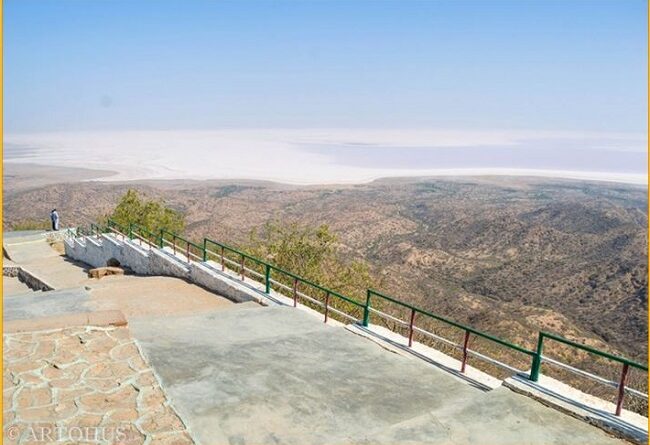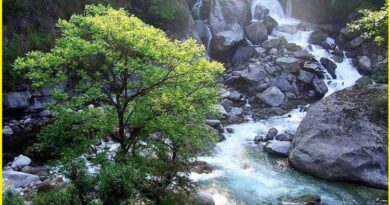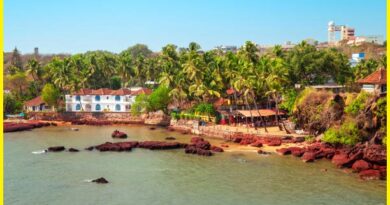“The Great Run of Kutch,” Explore the India’s largest salt plain on your own

The region is known as Kutch literally meaning “intermittently wet and dry” and the name “Rann” comes from the Hindi word ran meaning “desert.” Due to its proximity to the Pakistan border, the Indian army has a base at Rann and has army officials patrolling around the area throughout the day. To visit Rann of Kutch, all travelers must have valid id proofs to get in at the entry point.

Geology
The Rann area was a vast shallow of the Arabian Sea and was submerged during marine incursions in the geological past but after geological upliftment turned to desert as the sea transgressed and left behind Quaternary clay and evaporate sediments. The Kutch Basin is a Late Triassic to Cretaceous rift basin that evolved into a passive margin basin during the Cenozoic. Kutch Peninsula we find a diverse landscape of highlands or hills and lowlands encompassing salt flats to the north and east, grasslands (Banni grassland) in the center.

Kutch has great potential for designating national parks for geologists, students, and ecotourists. The fault blocks of the Kutch Basin in western India offer a unique opportunity to observe the Jurassic-Cretaceous-Paleogene sediments outcropping anywhere else in Western India.
Also, read- One of the most unique landscapes on the planet- “The Water Pocket Fold” take an adventurous tour to another planet
Wild Ass century
The Wild Ass Sanctuary is located in the Little Rann of Kutch. It covers an area of 4954 km². The Sanctuary is named after a sub species of wild ass, the last population of which it harbors. The Rann is one of the most remarkable and unique landscapes of its kind in the entire world.

The Rann of Kutch has a variety of landforms, drainage, and relief pattern which clearly reveals a complex interplay of tectonics, sea-level changes, and lithology as also erosion and deposition. It is dotted with about 74 elevated plateaus or islands, locally called ‘bets’. The largest plateau called Pung Bet has an area of 30.5 km² and the highest island Mardak is 55 m.
On the southwestern edge of the desert, the Banni grassland is known to attract more than 250 species of birds. Like-flamingos, cranes, and spoonbill during the winter season. On the western side, the Narayan Sarovar Chinkara Sanctuary plays host to honey badgers, pangolin, bustards, and partridges.
Fossil Park
Mohan Singh Sodha, probably India’s biggest private collector of fossils in Kutch. He is a Shaurya Chakra awardee and collected more than 10,000 specimens of fossils. He even has a fossil specimen named after him.

His collection includes fossilized dinosaur eggs, dinosaur teeth, and the vertebrae of sea animals. But it was a seven-foot-long, 65 million years old sea cow that attracted the most attention. Kutch is full of fossils, dating back to more than 200 million years to recent age.
Narayan Sarovar
Narayan Sarovar, one of the holiest lakes of Hindus, is sacred to Lord Narayan. It is located in Lakhpat taluka of the Kutch district. The ancient Koteshwar temple lies only 4 km away. The lake is mentioned in Hindu Purans as five lakes (Panch-Sarovar) – Mansarovar, Bindu Sarovar, Narayan Sarovar, Pampa Sarovar and Pushkar Sarovar.

The Rann Utsav
The Rann Utsav is a three-month-long festival that takes place on the Great Rann of Kutch. Starting from mid-November to February. This festival hosts many activities and performances by local folk artists, renowned singers, and more which attract several thousands of people to this place. A camel safari on the White Desert is the most important activity in Great Rann. The festival is also the main source of income for the locals around who welcome visitors from across the globe.

Kutch is also known for its unique craft that has been mastered over centuries by the people of this land of sheer artistry. The variety of crafts ranging from weaving, patchwork, block-printing, bandhani, tie-and-dye, Rogan-art, and other ethnic styles of embroidery, to pottery, wood-carving, metal-crafts, and shell-work.
Apart from this, the island is home to a 5,000-year-old Indus Valley civilization site known as Dholavira. Siyot caves, Lakhpat Fort, Surkotada, kanmer, Kala dunger, and Mandvi beach are worth visiting the site in great Runn of Kutch.

The best time to visit Rann is during the Rann Utsav, but for those who not wish to the part of crowds, a visit to Kutch in November or March is a better option. A few other ‘not-to-miss’ spectacles at Rann are the sunset and the moon rise or a new moon night which adds to the beauty of the white desert by adding different shades of colors to the white sand.




Pingback: Kalo Dungar Gujarat- A Stunning sea facing hill known for Unusual Phenomenon - Geotourism